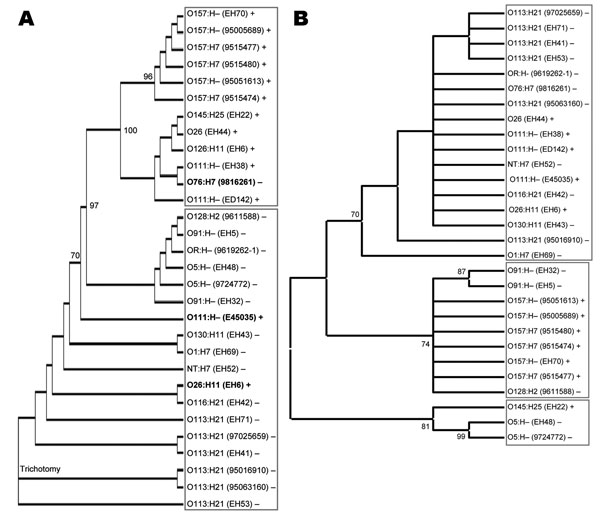Volume 15, Number 3—March 2009
Research
Shiga Toxin–producing Escherichia coli Strains Negative for Locus of Enterocyte Effacement
Figure 3

Figure 3. Neighbor-joining tree of ehxA (A) and repA (B) as implemented in ClustalW (www.ebi.ac.uk/Tools/clustalw2). This rectangular cladogram demonstrates the distinct clades (shown by boxes) for ehxA that delineate locus of enterocyte effacement (LEE)–negative and LEE-positive Shiga toxin–producing Escherichia coli strains. Exceptions to this pattern are shown in boldface, strain names are shown in parentheses, and + or – indicates the presence or absence of LEE. Significant nodes were identified by bootstrapping (Monte Carlo randomization); nodes were present in >70% of the 1,000 bootstrap trees highlighted and identified as significant.
Page created: December 07, 2010
Page updated: December 07, 2010
Page reviewed: December 07, 2010
The conclusions, findings, and opinions expressed by authors contributing to this journal do not necessarily reflect the official position of the U.S. Department of Health and Human Services, the Public Health Service, the Centers for Disease Control and Prevention, or the authors' affiliated institutions. Use of trade names is for identification only and does not imply endorsement by any of the groups named above.